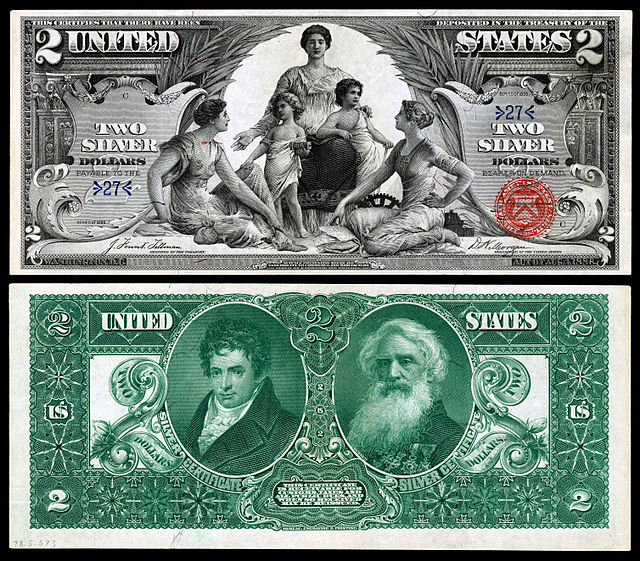"Educational Series" is the informal name used by numismatists to refer to a series of United States silver certificates produced by the U.S. Treasury in 1896, after its Bureau of Engraving and Printing chief Claude M. Johnson ordered a new currency design. The notes depict various allegorical motifs and are considered by some numismatists to be the most beautiful monetary designs ever produced by the United States.
Educational Series
Image: US $1 SC 1896 Fr 224 (3923429)
Image: US $2 SC 1896 Fr.247
Image: US $5 SC 1896 Fr.270
Silver certificate (United States)
Silver certificates are a type of representative money issued between 1878 and 1964 in the United States as part of its circulation of paper currency. They were produced in response to silver agitation by citizens who were angered by the Fourth Coinage Act, which had effectively placed the United States on a gold standard. The certificates were initially redeemable for their face value of silver dollar coins and later in raw silver bullion. Since 1968 they have been redeemable only in Federal Reserve Notes and are thus obsolete, but still valid legal tender at their face value and thus are still an accepted form of currency.
The $1 silver certificate from the Hawaii overprint series.
$5 Series 1899 silver certificate depicting Running Antelope of the Húŋkpapȟa.
Educational Series one-dollar silver certificate (1896). National Numismatic Collection
Image: US $1 SC 1886 Fr 217







